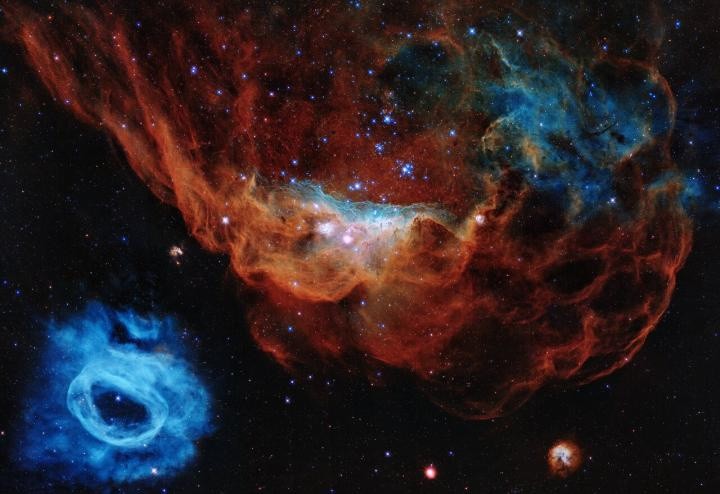NASA has launched a spectacular image of a star-forming region in a nearby galaxy to mark the thirtieth anniversary of the Hubble Space Telescope's launch.

On April 24, 1990, the Hubble Space Telescope was launched aboard the distance shuttle Discovery, along with a five-astronaut crew. The telescope has opened a brand new eye onto the cosmos that has been transformative for our civilization.
Hubble was launched from the Kennedy Space Center in Florida. Since then, it has made several huge discoveries, along with measuring the expansion charge of the universe and figuring out that black holes are not unusual in galaxies.
Every year, the NASA/ESA Hubble Space Telescope dedicates a small portion of its precious observing time to taking an individual anniversary image, showcasing particularly beautiful and significant objects. These photographs continue to venture scientists with exciting new surprises and to fascinate the general public with ever more evocative observations.
ALSO READ : Hubble Space Telescope Captures the Tsunami-like Power of Qasars That Could Create Ripples Across The Galaxy
Underwater world
Nicknamed the "Cosmic Reef" that resembles an underwater world, the newest Hubble picture shows the massive red nebula NGC 2014 towering above its smaller blue associate NGC 2020. Each of which is located in the Large Magellanic Cloud, a satellite galaxy of the Milky Way around 160,000 light-years away.
Nebulae are sizable interstellar clouds of dirt and fuel that may be formed after stars explode as supernovae at the quit of their lifecycles. These systems are frequently areas where stars form, so they may be every so often cited as "stellar nurseries."
In the center of the picture are numerous bright, newly fashioned stars, which are at least ten instances extra big than our sun. These stars emit powerful radiation that reasons the surrounding gasoline to glow in vivid colors.
The blue quantities of NGC 2014 indicate the presence of oxygen fuel heated to nearly 20,000 tiers Fahrenheit. Meanwhile, the purple shows the presence of nitrogen and hydrogen.
The blue nebula on the lowest left of the image consists of material ejected from a single large star, 200,000 instances brighter than our sun.
Hubble saw how the universe in a broad range of wavelengths, from ultraviolet to near-infrared light. Situated in orbit above the Earth, the telescope caught seize crystal-clear images that are unaffected by our planet's atmosphere.
Much of the visualization team's incredible work is showcased on the Horizon programme in BBC Two, which tells the story of the Hubble Space Telescope.
Hubble revolutionized how scientists understand the universe
Since it commenced operations thirty years ago, Hubble has furnished us with a non-stop movement of stunning pix together with these, that have revolutionized our know-how of the universe.
In a statement, Thomas Zurbuchen, associate administrator for science at NASA Headquarters in Washington, D.C. said Hubble had given astronauts stunning insights about the universe, from nearby planets to the farthest galaxies they have seen so far.
Zurbuchen said launching such a large telescope 30 years ago was revolutionary. He added the astronomy powerhouse is still delivering innovative science today. "[Hubble's] spectacular images have captured the imagination for decades, and will continue to inspire humanity for years to come," Zubuchen said.
Astronomer Dr. Frank Summers told BBC the Hubble showed astronomical objects alive with widespread appeal well beyond the science-attentive public.
"[We hope] that the public will not only marvel at the splendours of the cosmos, but also intuitively develop a more scientific mental model of the Universe," he added.
In total, Hubble has made more than 1.4 million observations, with astronomers using these data to write greater than 17,000 peer-reviewed medical papers. But a massive part of the telescope's fulfillment has been its capability to engage the public with its dramatic photographs of the cosmos.
ⓒ 2025 TECHTIMES.com All rights reserved. Do not reproduce without permission.




